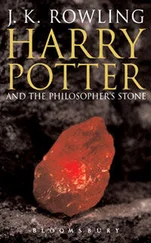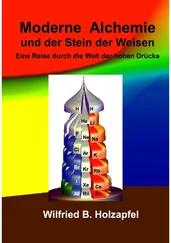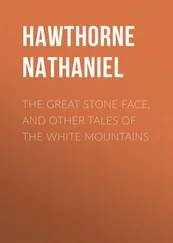Table of Contents
Modern Alchemy and the Philosopher’s Stone Modern Alchemy and the Philosopher’s Stone A journey through the world of high pressure Wilfried B. Holzapfel & Charles W. Christoe
A New World to Explore
Inspiration
Modern Alchemy and the Philosopher’s Stone Modern Alchemy and the Philosopher’s Stone A journey through the world of high pressure Wilfried B. Holzapfel & Charles W. Christoe
United States of the Elements – USE
A New World to Explore
Inspiration
The blooming of Alchemy
What is the quintessence?
Modern Alchemy
Our Earth
A state map for the whole cosmos
The Philosopher's Stone
Hot Ice
Black-Red-Golden Sulfur
Black Air
Blueprints of Simple Crystals
Journeys & Maps
From diamond to lead
Can nitrogen become a metal?
On to the oxygen group!
When molecules move close together
Jupiter's inner life
Why, why, why!
Boron and its family
Tomography of Earth - Lots of hot iron
A look inside the atom
The soft candidates
Alkaline earth metals, neighbors of the transition metals
The colorful world of rare-earth metals
Homeward Bound
A colorful rug
How soft are the atoms?
The Inert Mass in Science
How Hot is Hot?
Maps with Profile
Home at Last
Party Time
A Nice Piece of Cake
Pyramid cake or Philosopher's Stone?
Acknowledgments
Appendix 1: Literature for structures and phase-transitions
Literature
Reviews:
Additional data:
Appendix 2: Equations of State and related Data-File
Parametric Equations of State
Thermodynamic Equations of State
Data for the elements
Modern Alchemy and the Philosopher’s Stone
A journey through the world of high pressure
Wilfried B. Holzapfel & Charles W. Christoe

Wilfried B. Holzapfel and Charles W. Christoe
Coverdesign: Wilfried B. Holzapfel
© Wilfried B. Holzapfel 2016
epubli GmbH Berlin
www.epubli.de
United States of the Elements
in wide ranges of pressure and temperature

United States of the Elements – USE
At the beginning there was a big bang, which generated the Hydrogen
and little Helium, that is true, was in this early stardust brew.
Some dust condensed by gravity and stars appeared with density
just high enough for the ignition of nuclear fusion with the provision
for many more new elements, but these were not the final ends!
The heavy ones had still to wait for supernovae, which came late
as star explosions, an event, which is considered as the end
of all the element creation, we only miss still the equation
explaining how the numbers came to fit all this! This is the game!
With all the elements now here, some order makes this world more clear.
Wise man produced a Periodic Table with 8 Main Groups which do enable
to show some common properties in 8 columns, but there are these
remaining elements between with 10 at first and then 14,
Transition Metals, 3 rows of 10, and Lanthanoides, with 14 then.
The Actinoides, we will not need, they are unstable, well indeed! -
And still more order is present, if you look carefully at the end!
You can first see right on the top the Hydrogen and if you stop,
you see for Helium a slit just wide enough to give a fit
for the Rare Gases as column on top with our Helium.
The other columns broad and wide include the Main Groups not so tide
as all the lower sections squeezed between for the Transition Metals in this scheme.
And in the column number 3 the Rare Earth Metals you can see.
The chemists now look for reactions. The physicists see other actions!
They change the temperature and pressure and keep in mind, they have to measure
the properties in all these states and some results lead to debates
before one reaches the consensus on these results, which are immense
in these domains, which reach as far, as the interior of some star!
Much more ideas have been cast into this figure, but at last
a book can only give to you for this artwork the final clue!
A New World to Explore
Inspiration
It was a beautiful fall day, warm and dry. The foliage was just beginning to show signs of its expected annual splendor. There was little remaining evidence of the tremendous storm that had occurred the previous spring, downing trees and ripping the shingles off of many of the campus buildings. An exception was the lower trunk of a large tree that had stood in the front yard of one of the professor’s homes on Faculty Row at Wissen University. The wind had apparently broken the tree off some distance above the ground and, instead of having the arborists completely remove the trunk and stump, the owner of the property had asked the specialists to cut the trunk straight off at a height of about six feet. The naked tree trunk had stood for months like a sentinel in the front yard of the home, as if it were guarding the property from passersby.
On this particular day, two potential invaders of the tree’s domain came strolling along the sidewalk only meters from the tree’s position. Actually, they posed little threat to the tree trunk or to the man standing on a stepladder next to it, wielding a large pair of calipers and a meter stick. Only a short while earlier, the man had stripped the bark from unsuspecting stump and laid bare its core, now gleaming in the late afternoon sun. To the approaching pedestrians, the man appeared to be making measurements of the tree’s girth at various heights. He paused frequently to record his results in a small notebook that he kept in the rear pocket of his strangely formal-looking “work clothes.” He did not appear to be the typical tree surgeon and there was no elaborately stenciled truck nearby to indicate that he might be. He paid no attention to the approaching strangers and, in fact, was completely unaware of their arrival. He did not notice as one of the intruders spoke to the other in subdued tones.
“That is Professor Wood,” Marie said to Helen. “I think he is a Physics professor.”
Marie had struggled to recall his name from the new-student-week lectures in the engineering auditorium a month or so ago. “What an appropriate name for his current activity!”
Helen had attended similar introductory presentations but in a lecture hall on the Liberal Arts quad of the university. She passed the scene without an immediate reply to her friend. She had had a strenuous afternoon of classes and was anxious to get back to the dorm and some mental decompression. Like Marie, she had passed the stalwart stump many times during their first weeks on campus, but had failed to take note of its unusual height.
The two of them walked in silence for half a block, before Helen asked Marie, “What do you suppose Professor Wood was doing with the ladder and calipers at that stump back there?”
Unlike Marie, who was considering majoring in Physics or possibly Materials Science, Helen was more oriented towards liberal arts, in general. She was thinking about possibly majoring in Philosophy with a minor in Secondary Education. She had chosen an introductory course, “The Philosophy of Ancient Greeks and Romans,” as her first-semester elective. Her interest in tree stumps was more poetic than practical. The calipers and meter stick were inconsistent with her view of the natural life-cycle of the forest. She viewed logging, for instance, as a necessary evil foisted upon the world’s flora by the ever-encroaching flow of humanity.
Читать дальше














